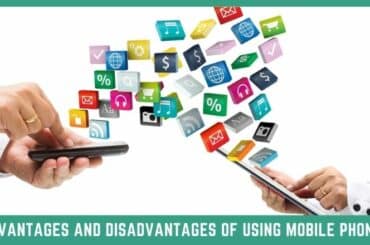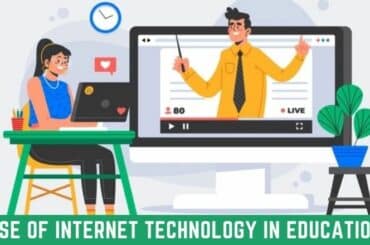STEM, which is an acronym for Science, Technology, Engineering, and Math, is one of the top priorities for modern students and educators worldwide.
Table of Contents
With AI becoming major innovation in the Fourth Industrial Revolution, the technology is actively transforming STEM classrooms and preparing the minds of tomorrow.
Forward-thinking schools are integrating AI into their curriculum and lesson plans.
Are you thinking about integrating AI into your teaching process too?
In this post, we’ll share seven ways AI will change STEM education in 2023 and beyond.
Read on to get inspired!
7 Ways AI Will Change STEM Education
“We are at an inflection point in history where we can shift the use of AI in education in the right direction.” – Erika Twani, CEO/founder of Learning One to One and author of Becoming Einstein’s Teacher
With artificial intelligence becoming a part of nearly every industry, learners and educators must be well-versed with the technology and its applications.
As a result, artificial intelligence in education (AIEd) is becoming the fastest-growing interdisciplinary field integrating new instructional and learning processes in STEM education.
Below are some of the key applications of AI in STEM classrooms that will transform all technical disciplines, curriculums, policies, and classroom structures:
- Adaptive Learning
Adaptive learning is one of the core applications of AI in modern schools, especially in complex subjects and topics.
Every student learns at their own pace and prefers different learning styles and methods.
For instance, visual learners often require real-world examples or 3D illustrations of how different concepts work.
With AI, you can ensure no learner in your STEM classroom gets left behind.
Using AI-enhanced learning platforms, you can gather and analyze data from each student to create personalized learning experiences by modifying their courses, teaching medium, and content.
- Experiential Learning
Experiential learning is a model that promotes learning by doing.
One of the biggest issues with traditional STEM courses and lesson plans is that they’re mostly theory-based. Hence, learners barely get any hands-on experience.
By integrating AI platforms, software, and immersive technologies like AR and VR, teachers can use active learning strategies to explain theoretical concepts and principles.
For instance, teaching the concept of volume using an equation becomes much more relatable when you use AI-enhanced 3D modeling software to create different types of containers (cylinders, pyramids, boxes, etc.).
- Smart Content Generation
With the aid of AI-enhanced authoring tools like Adobe Captivate and Articulate Storyline 360, schools can replace STEM textbooks with smaller, bite-sized courses featuring microlearning content, including videos, animations, infographics, and interactive PDFs.
The digitalization of content and learning can create a rich learning experience for students with higher knowledge retention levels.
Moreover, it can enable self-learning from anywhere using any device with an internet connection.
- Concept Visualization
Another benefit of smart content generation with AI is the potential for enhanced critical thinking and problem-solving.
Unfortunately, traditional STEM programs have been known to be rigid and don’t leave a lot of room for students to explore new ideas or be able to visualize different concepts.
For example, the Pythagorean theorem is one of the most basic theorems you learn in math class. However, most students are unaware of its real-world functions, including:
- Two-dimensional navigation on maps and drawings;
- Mountain steepness surveys;
- Construction site heights and other measurements;
- Security camera installation and face recognition angle setting, etc.
AI can help to visualize these important applications and, therefore, make the lesson more memorable and fun.
- Virtual Instructors
Traditional schools are accustomed to an in-person learning environment.
However, COVID-19 has disrupted “normal” operations and given rise to remote and hybrid learning.
Hence, the idea of learning from virtual humans is no longer frowned upon but welcomed by forward-thinking institutions.
As a rule of thumb, STEM subjects are much more complex than others.
Therefore, AI is crucial in developing remote training programs and facilitating online lectures.
For example, AI-based learning platforms, such as Cognii, Squirrel, Nuance, and Querium, collect and analyze student data on the interaction with the material you provide or the STEM course you create for learners.
Using this information, you can change the content, assessment, and engagement mediums.
How will this change STEM education in the future?
Schools will no longer need to rely solely on traditional STEM classes.
Secondly, it will prompt students to leverage different AI-based learning solutions and communication software to improve their tech literacy.
- Simulations
Many STEM applications are potentially dangerous for classrooms. Hence, another crucial role AI plays in STEM classrooms is to allow teachers to use simulations to create safe virtual environments for learning or explaining difficult concepts.
For example, the University of Colorado Boulder has created hundreds of simulations covering topics like physics, math, biology, and chemistry, including:
- States of Matter;
- My Solar System;
- Build a molecule;
- Number Line: Integers;
- pH Scale.
- Accurate Assessments
Finally, AI will change STEM education by providing useful tools and software to help teachers make more accurate assessments.
Human error is often inevitable, whether grading or evaluating qualitative performance.
With modern AI-enhanced tools like Mentimeter, Socrative, Edulastic, and Quizlet, you can create quizzes, detailed learning reports, complex assignments, and even video assessments for learners with relative ease and improved accuracy.
The Impact of Artificial Intelligence On Society
“Machine intelligence is the last invention humanity will ever need to make.” – Nick Bostrom, University of Oxford
Below are some of the most common use cases of AI in our daily lives:
- Personalized Shopping
AI is used by millions of e-commerce stores, websites, and retail apps to create recommendation engines for buyers based on their preferences, interests, and purchase history.
- AI-Powered Assistants
Siri, Cortana, and Google Assistant are all popular examples of AI-powered assistants we use on our phones and other devices to:
- Search the internet;
- Send/read texts;
- Set alarms and reminders;
- Control IoT devices;
- Translation;
- Shopping;
- Appointment/reservation;
- News and weather updates, etc.
Internet users also leverage cybersecurity solutions with AI running everything in the background. For example, modern VPN apps automatically use AI to create encrypted network tunnels and virtual IP addresses. Click here to learn more about VPNs.
- Autonomous Vehicles
Most modern vehicles are equipped with smart functions powered by AI, including GPS, cruise control, cameras, emergency braking, and radar. All of these advanced functions improve the in-vehicle experience for drivers and passengers.
- Navigation
GPS navigation has become a part of our everyday lives. AI technology has improved its accuracy and usability with more powerful algorithms and integrated devices. You can use it for:
- Finding nearby places;
- Avoiding traffic;
- Tracking stolen phones;
- Keep an eye on children;
- Optimizing routes, etc.
These are just a few examples of AI applications in our lives.
Today, every industry, including manufacturing, marketing, finance, security, travel, hospitality, and healthcare, uses AI in one way or another.
Conclusion
AI is the future of technology. Therefore, the education industry is actively working to reduce the learning gap and prepare STEM students for AI-oriented careers in science, IT, and engineering.
The more students familiarize themselves with AI in the classroom, the more likely they are to fill the future demands of different industries, from manufacturing to healthcare and retail.
So, if you’re interested in STEM and AI, there’s no better time to study it than now.





